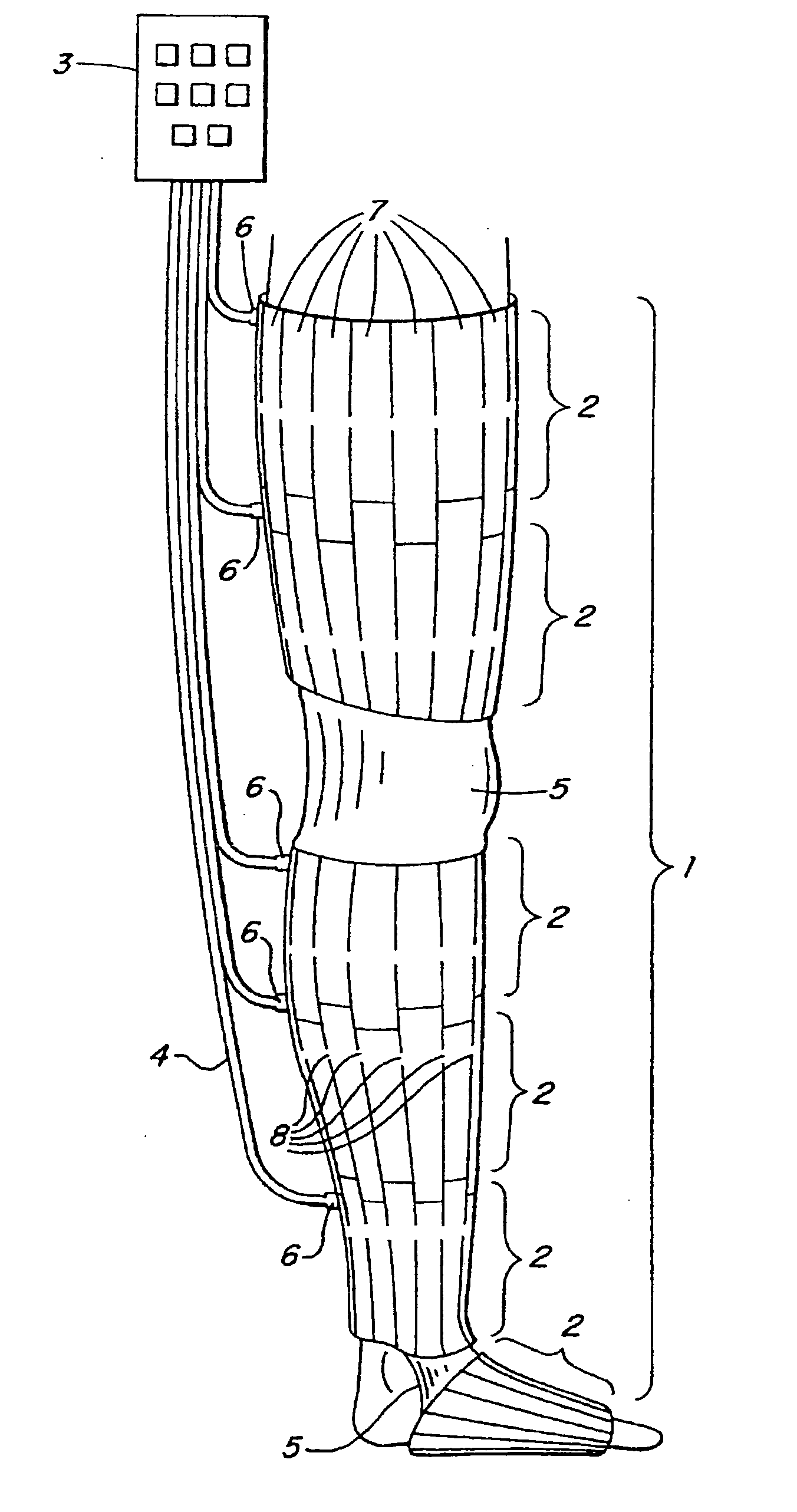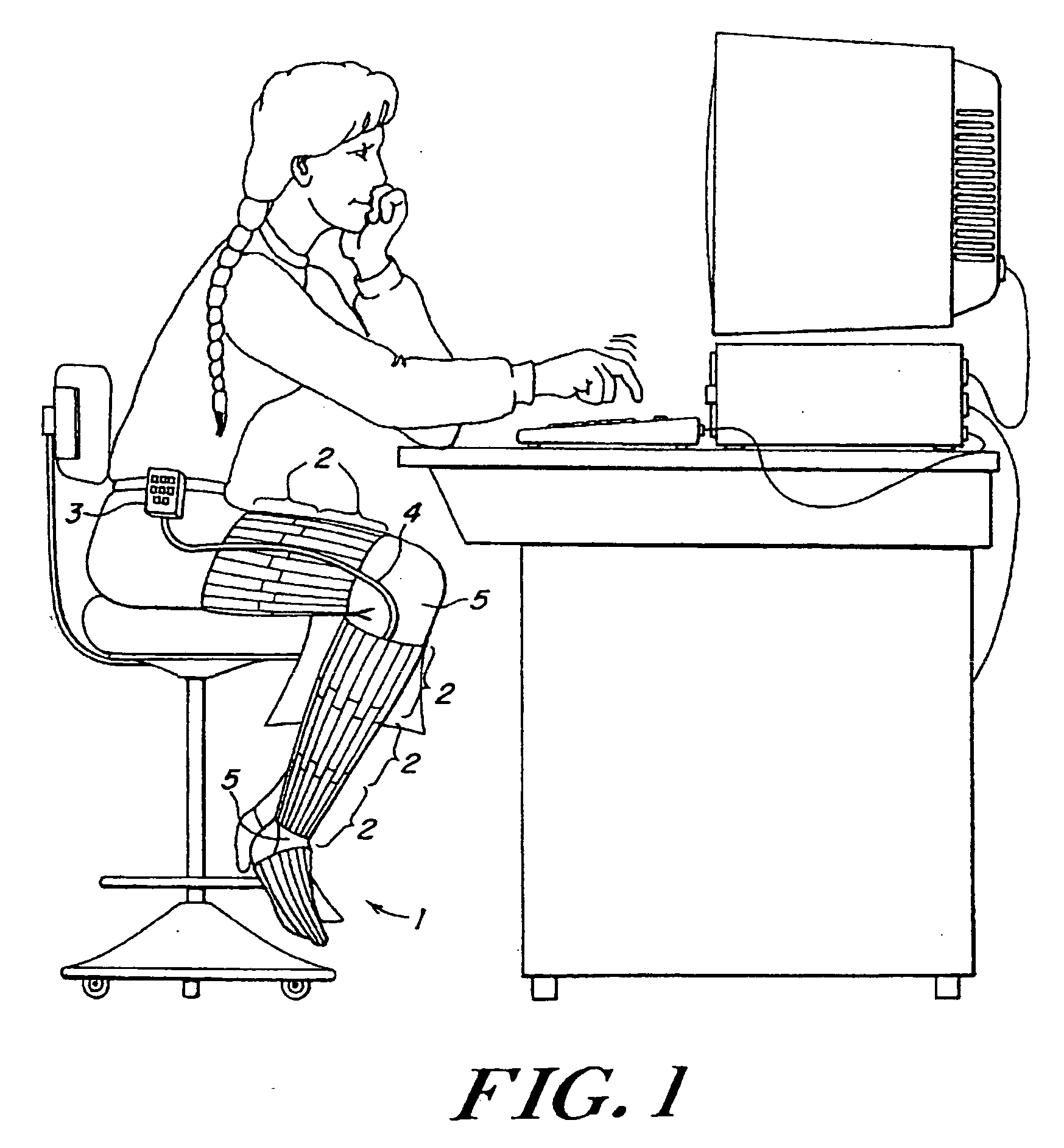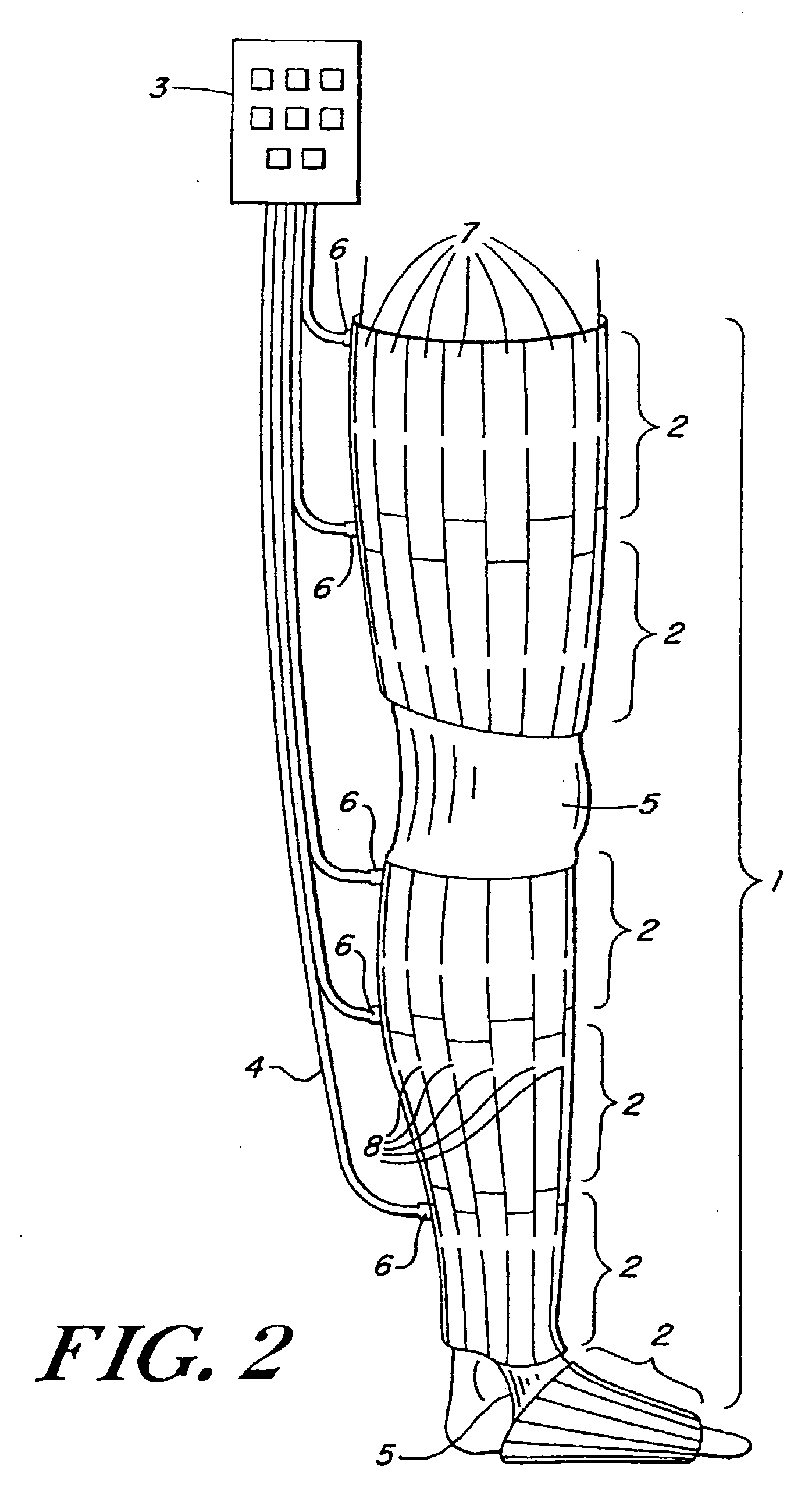Portable ambulant pneumatic compression system
a portable, ambulant technology, applied in the field of miniaturized, automatic portable ambulant systems, can solve the problems of imposing total confinement on the patient during treatment, heavy unit, difficult maneuverability and placement in the vicinity of patients, etc., to achieve the effect of expanding the life expectancy of patients, reducing the power consumption of the pump unit, and compactness
- Summary
- Abstract
- Description
- Claims
- Application Information
AI Technical Summary
Benefits of technology
Problems solved by technology
Method used
Image
Examples
Embodiment Construction
[0026] In the following, an embodiment of the invention will be described for use on the leg of an individual. However, it is to be understood that the invention is also intended for use on any body limb such as an arm, a foot, a part of a leg, arm, or foot, and may be used on two or more limbs simultaneously.
[0027] In FIG. 1, a patient is depicted wearing a massaging sleeve 1 of the invention on her leg while carrying out her routine duties. In FIG. 1, the trouser leg of the patient is cut away to reveal the sleeve. In practice, however, the sleeve remains concealed from view, and remains unnoticed even during operation when the cells are intermittently inflated. The sleeve 1 has an inner and outer surface composed of a durable flexible material and is divided into a plurality of cells 2 along its length and each cell is connected to the control unit 3 by a separate tube collectively labeled 4 in FIG. 1. Sections of the sleeve may be of non-inflatable elastic material 5, for examp...
PUM
 Login to View More
Login to View More Abstract
Description
Claims
Application Information
 Login to View More
Login to View More - R&D
- Intellectual Property
- Life Sciences
- Materials
- Tech Scout
- Unparalleled Data Quality
- Higher Quality Content
- 60% Fewer Hallucinations
Browse by: Latest US Patents, China's latest patents, Technical Efficacy Thesaurus, Application Domain, Technology Topic, Popular Technical Reports.
© 2025 PatSnap. All rights reserved.Legal|Privacy policy|Modern Slavery Act Transparency Statement|Sitemap|About US| Contact US: help@patsnap.com



